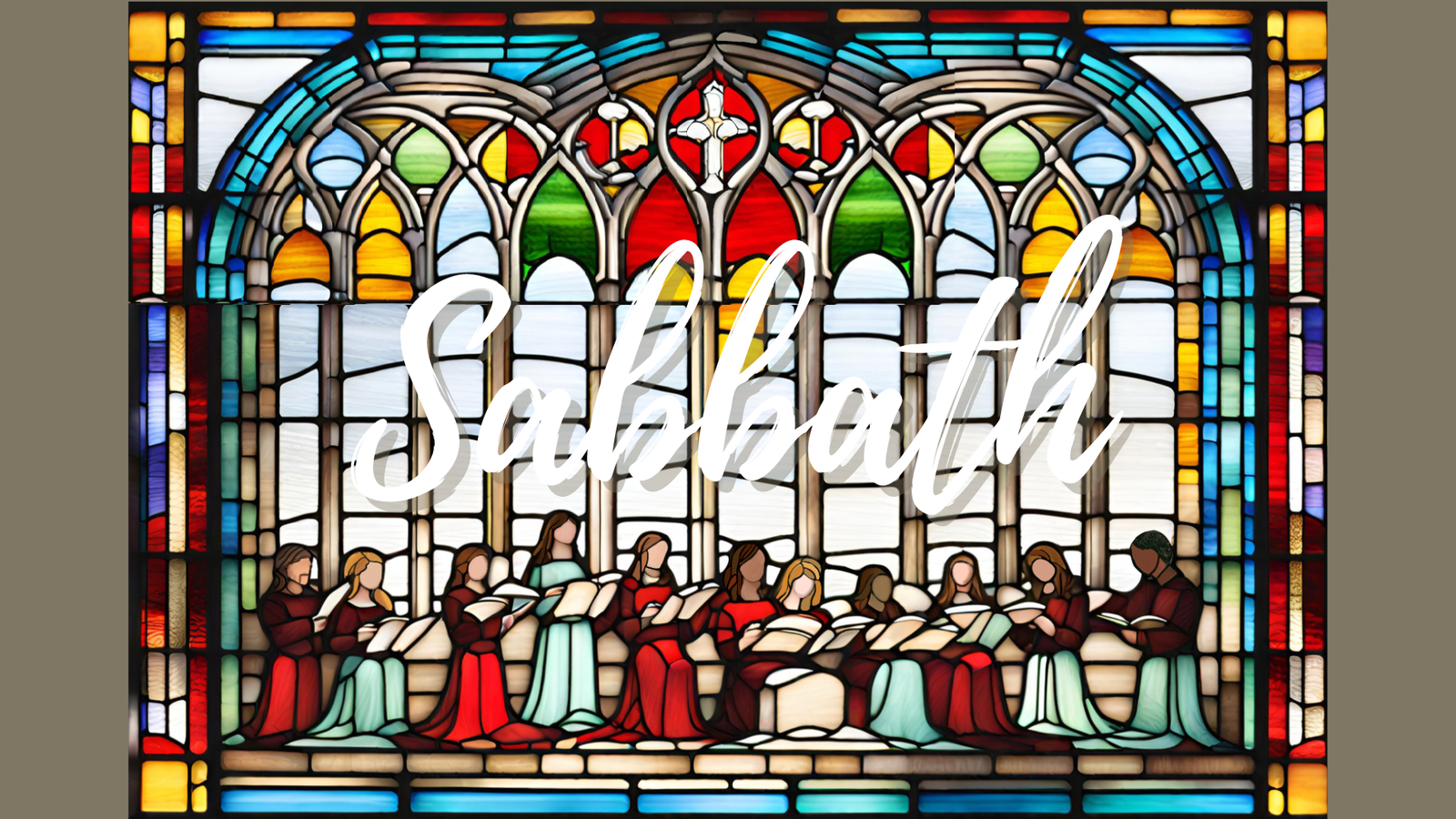 In the sacred echoes of our worship at Court Street, we find hymns and songs that not only resonate within our hearts but also weave a tapestry of spiritual reflection. In this exploration, we delve into the rich melodies that amplify our messages, connecting the hymns with the profound messages of “The Sabbath” and Mark 2:23-3:3.
In the sacred echoes of our worship at Court Street, we find hymns and songs that not only resonate within our hearts but also weave a tapestry of spiritual reflection. In this exploration, we delve into the rich melodies that amplify our messages, connecting the hymns with the profound messages of “The Sabbath” and Mark 2:23-3:3.This is the Day
“This Is the Day,” composed by Les Garrett and found in The United Methodist Hymnal (No. 657), is a vibrant chorus rooted in Psalm 118:24: “This is the day that the Lord has made; let us rejoice and be glad in it.” The hymn embodies a rich tradition of singing Scripture directly, particularly prevalent in evangelical and charismatic traditions.
Historically, churches employed metrical versions of psalms, intending to closely align with Scripture’s words. “This Is the Day” continues this tradition, quoting Psalm 118:24 directly and celebrating God’s redemptive acts, originally associated with the Passover before the Exodus.
Les Garrett, born in New Zealand in 1943 and currently a minister in Australia, is a proponent of singing Scripture choruses. His hymn, originating in his collection “Scripture in Song” (1967), has evolved with additional stanzas like “This is the day when he rose again” and “This is the day that the Spirit comes.” The tune, an arrangement by Garrett of a Fijian folk tune, adds to the hymn’s charm, allowing for antiphonal or alternating group singing. Overall, “This Is the Day” serves as a joyful declaration of gratitude and celebration, aligning congregational worship with the scriptural exhortation to rejoice in the day the Lord has made.
The hymn is fitting for any worship occasion, resonating with the Christian understanding of Sunday, the Lord’s Day, as referenced in Revelation 1:10, Matthew 12:8, and Acts 2:42 and 20:7.
Restless
In the echoes of our worship, we hope Audrey Assad’s song “Restless” finds resonance at Court Street. The lyrics, with a soulful plea for rest in the divine, speak to the restlessness inherent in our human journey. As we prepare for our “The Sabbath” message, reflecting on Mark 2:23-3:3, we understand the yearning for rest, a rest that transcends physical repose.
The song beautifully articulates the tension between our earthly frailty and the divine expanse, highlighting the restless nature of the human heart until it finds its solace in God. It resonates with the essence of the Sabbath, a day set apart for spiritual rejuvenation and communion with the divine.
In the spaces between our praises and prayers, the lyrics mirror the longing expressed in Mark 2:23-3:3, where Jesus asserts His lordship over the Sabbath. The song captures the essence of seeking refuge and finding peace in the Divine Keeper of our hearts.
As we journey through the week, the song becomes a poignant soundtrack, reminding us of the continuous yearning for rest, both in our physical weariness and the deeper rest that comes from spiritual connection. The words, “I am restless, ’til I rest in You,” echo the universal desire for a profound and lasting peace.
In the quiet moments of our worship, we recognize the importance of letting our restless hearts find stillness in the presence of God. The lyrics, “Still my heart, hold me close, let me hear a still small voice,” encapsulate the essence of Sabbath rest – a moment to hear the divine whispers amidst the clamor of our lives.
As we delve into “The Sabbath” message, we carry the melody of “Restless” in our hearts, understanding that our restlessness finds its resolution in the sacred spaces of worship and communion. Let this song become a prayer, resonating with our collective yearning for a rest that can only be found in the divine embrace.
Behold the Lamb (Communion Song)
At Court Street, the melody of “Behold the Lamb (Communion Song)” becomes a sacred thread weaving through our worship, echoing the heart of our upcoming message on “The Sabbath” and the teachings in Mark 2:23-3:3.
The song, with its poignant lyrics, invites us to behold the Lamb, a symbolic gesture resonant with the themes of rest and sanctification. As we prepare for the Sabbath, a day of divine rest and reflection, “Behold the Lamb” aligns with the essence of communion, a sacred act that symbolizes unity and connection with the Divine.
In the spirit of Mark 2:23-3:3, where Jesus emphasizes His lordship over the Sabbath, the communion song emphasizes the Lamb of God, the central figure in Christian theology. It mirrors the deep spiritual communion embedded in the Sabbath, where we rest not only physically but also in the redemptive work of the Lamb.
The lyrics, “Behold Him there, the risen Lamb, my perfect, spotless righteousness,” echo the profound truth of the Sabbath—that in Christ, we find our righteousness, our rest, and our completeness. The song, like the Sabbath, becomes a moment of reflection on the sacrifice and grace encapsulated in the Lamb.
As we delve into “The Sabbath” message, “Behold the Lamb” becomes a soundtrack to our understanding of the sacred day. The communion elements, a central aspect of the song, align with the call to remember and honor the Sabbath, a day set apart for spiritual nourishment and connection with the Lamb who brings rest to our souls.
Through this song, we find a musical journey into the heart of our faith, intertwining the themes of communion, Sabbath, and the Lord of both. As we behold the Lamb in our worship, we anticipate the deeper revelations of rest and sanctification that “The Sabbath” message and Mark 2:23-3:3 hold for us.
Break Thou the Bread of Life
“Break Thou the Bread of Life,” authored by Mary Artemisia Lathbury and found in The United Methodist Hymnal (No. 599), stands as a poignant hymn with roots in the Chautauqua movement. Lathbury, a multifaceted individual known for her artistic, literary, and organizational contributions, wrote this hymn in 1877 by the shores of Lake Chautauqua.
The hymn, inspired by the biblical account of Jesus feeding the multitude (Matthew 14:13-21; Mark 6:39-44), was crafted for the Normal Classes at the Chautauqua Institution. These classes, integral to the educational mission of the institution, aimed to train Sunday school teachers during the summer.
“Break Thou the Bread of Life” is often sung during Communion services, emphasizing the intimate connection between the Christ revealed in the “sacred page” and the individual reader of the Bible. Unlike hymns that spotlight Scripture’s relationship to the broader church, Lathbury’s composition underscores how the Christ of the Scriptures brings truth, breaks the power of bondage, and provides peace to each person partaking in the “bread of life.”
The hymn’s enduring popularity is evident, with more than sixty of Lathbury’s hymns appearing in twentieth-century American hymnals. Notably, this hymn, along with “Day is dying in the west” (UM Hymnal, 687), continues to be a staple at the Chautauqua Institution’s Sunday evening vesper services. Its inclusion in Methodist hymnals from 1905 attests to its lasting impact and resonance within Christian worship.
Lord I Want to be a Christian
“Lord, I Want to Be a Christian,” a profound African American Spiritual found in The United Methodist Hymnal (No. 402), holds a rich history deeply tied to the experiences of the enslaved African community. With a repetitive and heartfelt structure, the hymn expresses a sincere desire for Christian virtues in the face of adversity.
This spiritual, part of a collection edited by Frederick J. Work and performed by the Fisk Jubilee Singers, gained standardization and wider recognition through its publication in Folk Songs of the American Negro (1907). Although various hymnals reprint it, the version commonly used today is missing the original fourth stanza, “I don’t want to be like Judas.” The simplicity of its harmonization echoes the diatonic style of its time, with exceptions like William Farley Smith’s arrangement in The UM Hymnal, which introduces more chromatic elements.
The sentiments of this spiritual find parallels in another slave song, “Lord, make me more patient,” documented in Slave Songs of the United States (1867). The interchangeable adjective expressing virtues like holiness or love demonstrates the “expandability” of these songs, allowing for variations in different settings. The repeated phrase “in-a my heart” suggests a call-and-response style, emphasizing communal participation.
Eileen Guenther, a United Methodist scholar, notes that the repetition of “in my heart” can be seen as a response to the hypocrisy of slave owners who, despite professing Christian beliefs, treated their slaves brutally. The spiritual becomes a prayer for conversion, embodying a desire to live ethically, and, in a condensed form, mirrors the “fruit of the Spirit” outlined in Galatians 5:22-23.
This hymn, with its simplicity and depth, serves as a poignant expression of faith, embodying the hope for spiritual transformation amidst the harsh realities of slavery.
As we worship at Court Street, these hymns become more than melodies; they become conduits of spiritual reflection. In the interplay of music and message, we find a sacred space where the melodies echo the profound truths of Scripture. May our worship continue to be a symphony of praise, a reflection of the deep spirituality embedded in every note and lyric.


No responses yet